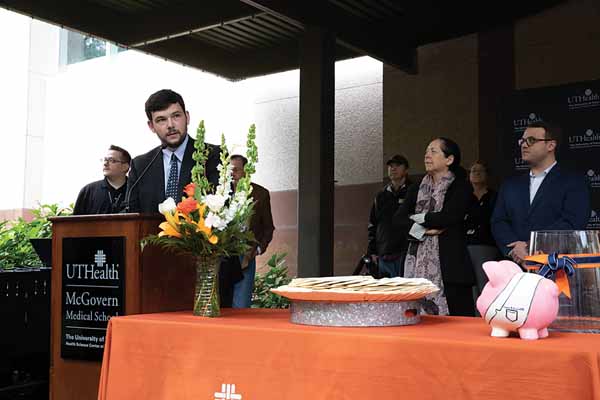
On a chilly spring morning in downtown Houston, the atmosphere was both celebratory and tense. On March 15, more than 200 medical school seniors, as well as their friends and family, gathered outdoors in Webber Plaza behind the McGovern Medical School at UTHealth in Houston. The students were about to learn where they’d be doing their residency training.
Class president Alexander Wetzig (above, left) reminded fellow students to not let the residency they match to affect their sense of self-worth.
“What matters is that you have been chosen against thousands of spectacular applicants around the globe … as worthy of the privilege to care for the health of a human being,” he said.
Barbara Stoll, MD, (above, right) dean of the McGovern Medical School, said she believes Match Day rivals graduation in importance for students.
“It’s sort of the Academy Awards of medical school,” she said.
Nationally, the 2019 Main Residency Match was the largest in history. (See “National Match Day Results,” page 45.)
Most McGovern students – 54 percent – are staying in state for their training, according to the school. That benefits Texas since physicians usually start their practice near the site of their residency. Texas has led the country in population growth since 2000 and has a chronic shortage of physicians, according to the Texas Department of State Health Services.
The Texas Medical Association has spearheaded efforts to expand the state’s residency programs. Physician-trainees in Texas have grown by 23 percent over the past decade to 7,953, and the number of programs increased by 29 percent, according to data compiled by TMA. That is faster than the national growth rate of 21 percent for the number of residents and 26 percent for the number of programs. Further, TMA has backed legislation that has created more than 237 residency slots since 2014 to help keep Texas medical school graduates in Texas.
TMA has worked closely with lawmakers and state leaders to expand graduate medical education in Texas with a goal of having 1.1 entry-level residency slots for every one graduating medical student. The state reached that goal in 2018, but the opening of new medical schools and increasing class sizes in existing schools makes this an ongoing struggle.
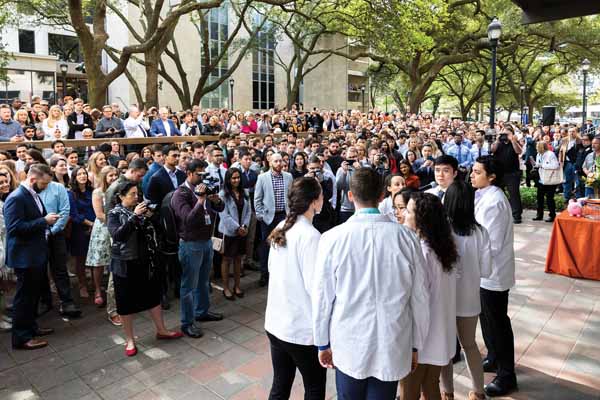
Hundreds of friends and family came out to support future physicians graduating from the McGovern Medical School at UT Health in Houston. After some speeches and a song by the class a cappella group, the real business of the day began. As each of the 240 students were called out at random, they came up to a table to receive their sealed, cream-colored envelopes that told them where they'll be doing their residency training. Students waited until everyone had one, and then all opened the envelopes at once.
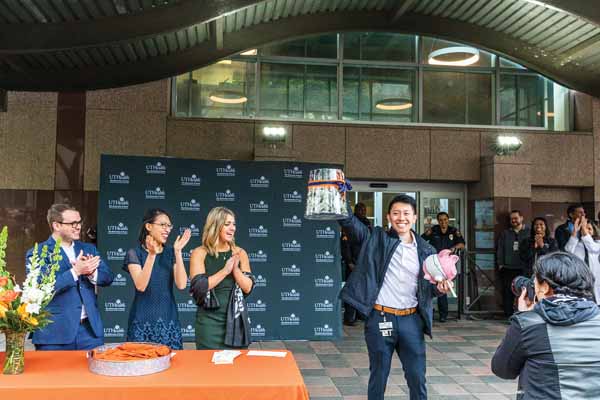
Awaiting their turn, students laughed and joked and cheered for friends as each random name was called. But there was also underlying tension. “Here we go,” one student muttered in relief when his name finally came up. McGovern Medical School followed the long tradition of having each student put a dollar in a pot to be won by the last person called. The entire crowd burst into cheers as Charlie Wan, who matched to anesthesiology at New York University, finally got the last envelope.
Of the specialty choices among McGovern students, internal medicine was first with 34 positions, and pediatrics was second with 26. Those numbers reflect nationwide Match data.
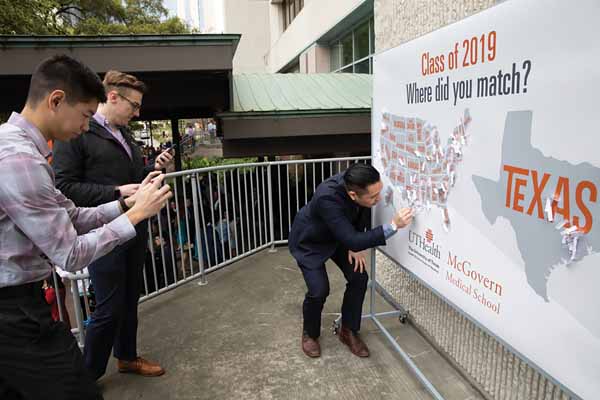
McGovern’s Match Day map showed 106 McGovern students are headed out of state for their residencies. They will be living in 34 states and the District of Columbia, with most of them concentrated in California and New York. As students tore into their envelopes, the crowd broke out into a mass of delighted screams, high-fives, hugs, and fist bumps. Ana Solis Zavala was happy to hear that she’d matched to St. Louis Children’s Hospital in Missouri for her pediatric residency. Ms. Solis Zavala, whose own life was saved by a physician when she developed sepsis as an infant, said she was excited to take the next step in her medical education.
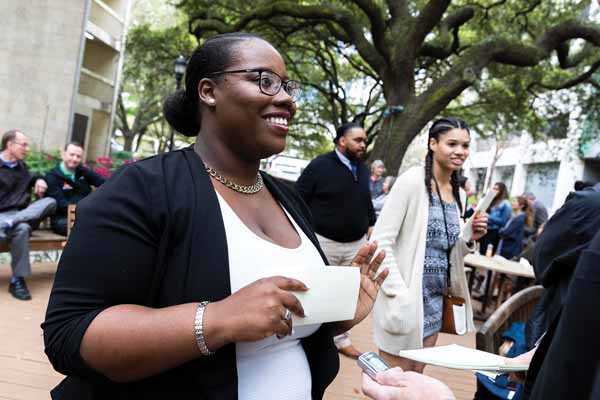
About 46 percent of the McGovern graduates who are staying in Texas for residency training are entering primary care programs. “I’m going back home,” said Kendra Williams (left), who is from Hamlin, a small town near Abilene. She matched to a residency at a Texas Tech University Permian Basin rural training track, where she’ll learn to become a small-town physician. “For me, it means doing rural family medicine and obstetrics, doing my own procedures with people that I know, taking care pretty much of the place that I’m from.” Texas has a shortage of all physicians, but especially rural ones. In 2018, 27 of 254 Texas counties had no physician at all, and 98 had five or fewer, according to the Texas Department of State Health Services.
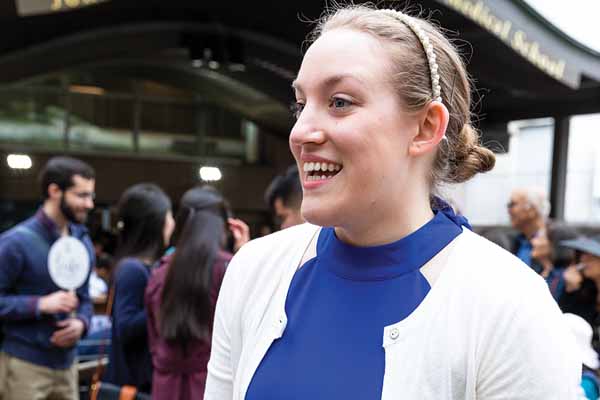
Match Day is a relief for most medical students. “You don’t realize how much stress you’re under until it’s gone and you know where you’re going,” said Sarah Matthews (below), who matched to her first choice, a physical medicine and rehabilitation residency at UT Southwestern Medical School in Dallas. Some students don’t make it into their preferred specialty or program. That might become more of a problem for students after 2024, when three new Texas medical schools are set to begin graduating students, bringing a projected 231 new medical graduates to the state each year. A TMA-backed measure passed by the Texas Legislature in 2017 is designed to alleviate that problem. It requires all new public medical schools to plan for a corresponding entry-level training position for each new medical school graduate. The 2019 legislature is considering a bill that would expand that requirement to account for expected growth in new schools’ class sizes.
National Match Day Results
Total offered positions: 35,185*
Matched applicants: 33,417*
Fill rate: 95 percent
Unfilled positions: 1,768
*Record high
At press time, finalized U.S. rates and Texas-specific data were not available. The record high of total positions was caused in part because a growing number of osteopathic programs joined the Main Residency Match for the first time in 2019. This is the result of an ongoing transition to a single accreditation system for residency programs.
Tex Med.
2019;115(5):38-45
May 2019 Texas Medicine Contents
Texas Medicine Main
Page